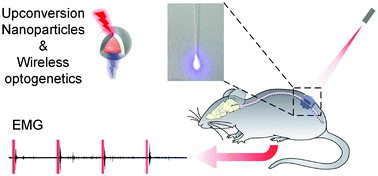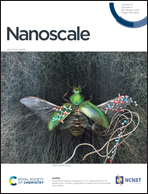Flexible and fully implantable upconversion device for wireless optogenetic stimulation of the spinal cord in behaving animals†
Abstract
Wireless optogenetics based on the upconversion technique has recently provided an effective and interference-free alternative for remote brain stimulation and inhibition in behaving animals, which is of great promise for neuroscience research. However, more versatile upconversion devices are yet to be implemented for neural tissues other than the brain. In this study, a flexible and fully implantable upconversion device was developed for epidural spinal cord stimulation. The upconversion device was fabricated via a straightforward, two-step, heat-pulling process using biocompatible thermoplastic polypropylene as a backbone, which is mixed with upconversion nanoparticles (UCNPs) to form a flexible optrode device that converts near-infrared (NIR) irradiation to visible light for the optogenetic manipulation of spinal cord tissues. In this system, the flexible upconversion device is fully implantable within the rigid spine structure, and shows excellent long-term biocompatibility even after a four-month experiment. In anesthetized mice, the UCNP device implanted at the L4 vertebra can be used to reliably evoke hindlimb muscular activity upon NIR triggering. In behaving mice, neural modulation by the same UCNP devices effectively inhibits the animals’ movement as a result of remote spinal cord stimulation. We believe that the flexible upconversion device provides new possibilities for wireless neural modulation in spinal cord tissues, and will become a valuable supplement to the current tool sets of upconversion based wireless optogenetics.

- This article is part of the themed collection: 2019 Nanoscale HOT Article Collection


 Please wait while we load your content...
Please wait while we load your content...